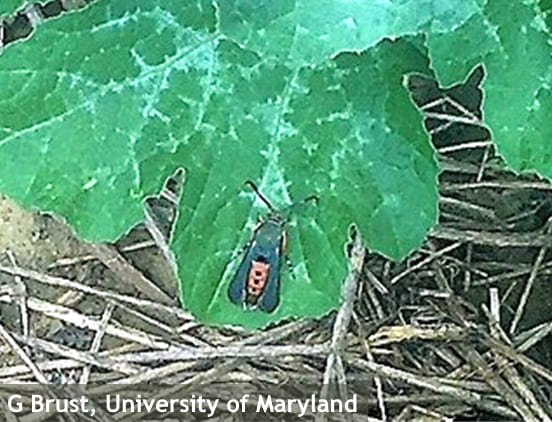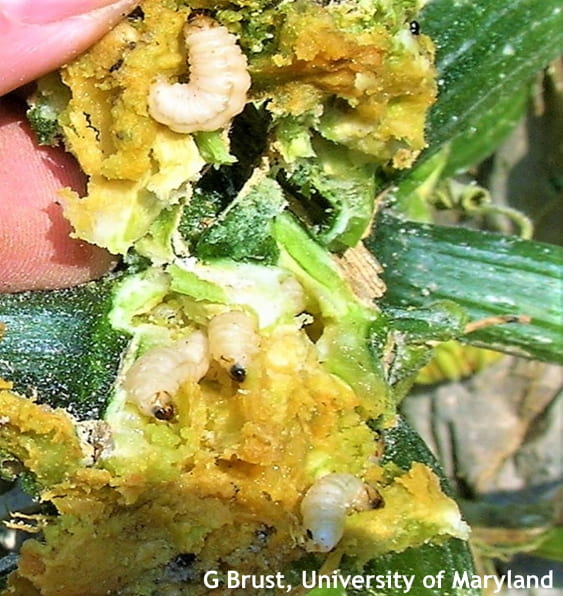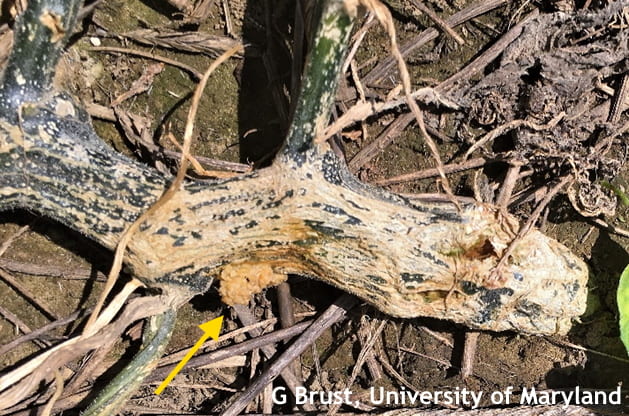Jerry Brust, IPM Vegetable Specialist, University of Maryland; jbrust@umd.edu

Figure 1. Adult squash vine borer at rest
I have gotten several emails and calls from growers in different areas of the state reporting they are seeing the beginnings of squash vine borer problems in their pumpkins or squash crops. IF you rotated at least ¼ mile from your squash/pumpkin fields of last year you should be OK, however I know some growers either could not rotate or they could not rotate very far from last year’s crop.
Squash vine borer adults, Melittia cucurbitae, are moths that look like wasps. They are about ½ inch long with an orange abdomen and black dots (Fig. 1). These moths are day flyers and can easily be spotted flitting about a squash or pumpkin field. The adults emerge in mid or late June in our area. Adults lay most of their eggs in the first 12-15 inches of the stem. Pumpkins, zucchini and summer and winter squash are preferred plants, rarely have I seen them in watermelon, cucumber or cantaloupe. The eggs hatch in about one week at which time larvae bore directly into stems and feed. The large cream-colored larvae are 1-1.5 inches long (Fig. 2). Their feeding blocks the flow of water to the rest of the plant. Larvae feed for 4-6 weeks, then exit the stems and burrow into the soil to pupate, where they overwinter.

Figure 2. Squash vine borer larvae (4) in stem
The first symptom of a borer attack is the wilting of plants, which usually occurs in July. The wilting may occur at first only when in direct sun, but the plants will eventually die. At the base of the plant you can find greenish-yellow sawdust like material (frass) and a scarred swollen stem (Fig. 3).
Squash vine borers can be difficult to manage once larvae are in the stem, as it is too late to do much. When squash vines begin to run or you see adults you can treat the base of the stem (the first 15-18 inches of stem) with a pyrethroid insecticide (or any other recommended pesticide in the Mid-Atlantic Vegetable recommendation guide) every 7-10 days, over the next 21-30 days. You could also use Bt insecticide (it is OK but not great) or Entrust which is better and both are OMRI approved.

Figure 3. Frass (arrow) and pumpkin stem damaged by borers
